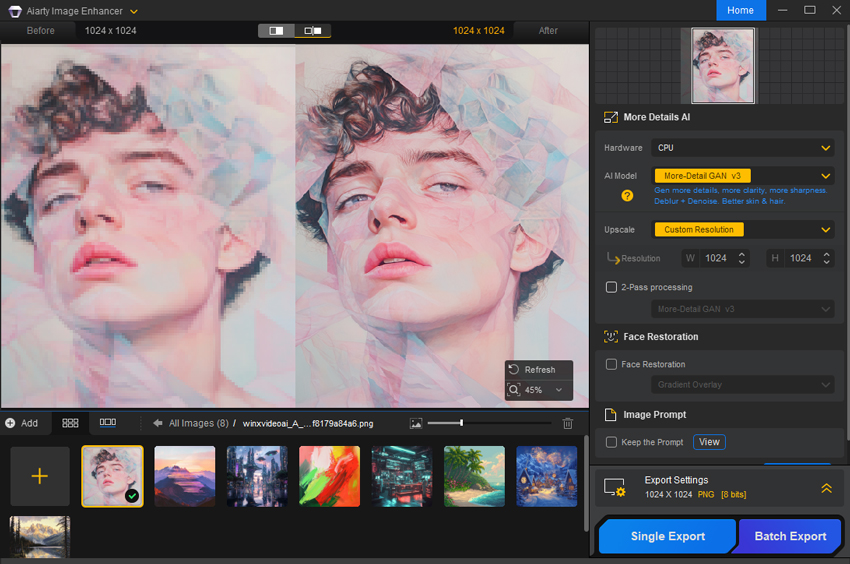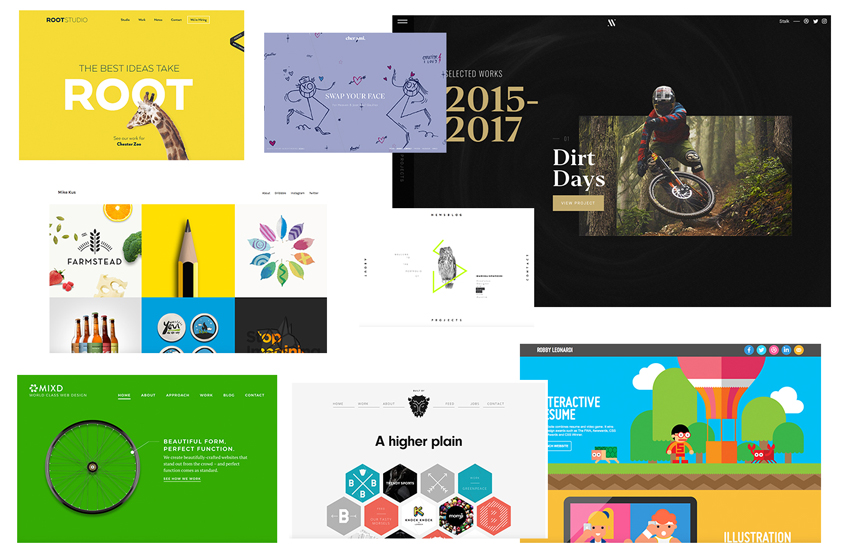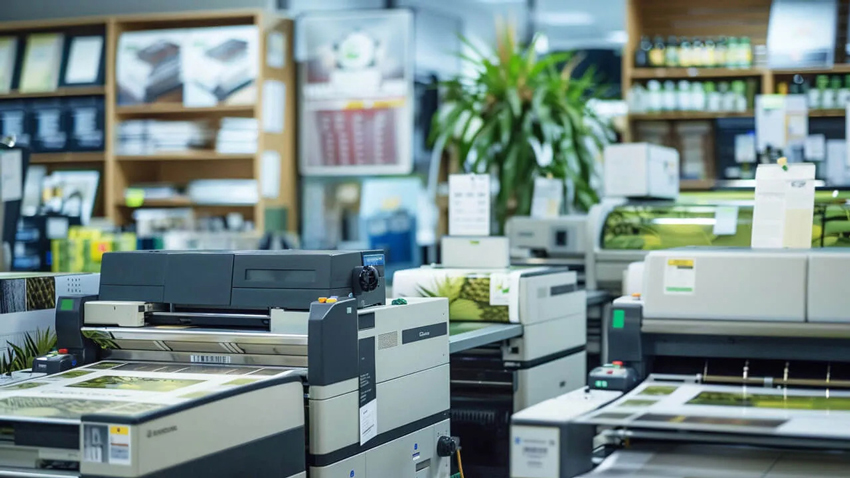Summary: In this blog, we outline the essential steps and tips for selling photography prints. Looking to boost your print sales? Enhance your photograthy to be sharp, detailed, and optimized for any platform with the best image upscaler.
Have you ever stared at your stunning portfolio and wondered, "How do I turn these images into income?"
For aspiring and professional photographers alike, selling prints isn't just about showcasing artistic talent—it's about transforming fleeting moments into lasting value, tangible art, and a sustainable business. Whether you're a seasoned pro or a passionate hobbyist, mastering the art of selling photography prints unlocks a world where your creativity truly meets entrepreneurship.
Imagine your most impactful work – a golden-hour landscape, an intimate portrait, a bustling cityscape – adorning walls worldwide, generating revenue, and building a recognizable brand. But in today's crowded digital landscape, where do you genuinely begin? From meticulously curating your collection and identifying your ideal buyers to navigating online platforms and implementing smart pricing strategies, this guide cuts through the noise, providing a clear roadmap to success.
However, a common hurdle many photographers face is ensuring their images are truly print-ready. Low-resolution files, unsharp details, or subtle noise can significantly compromise print quality, especially for large-format art or posters. Without pristine clarity, colors can appear dull, and the intricate details you painstakingly captured may be lost in the final output. This is where professional image enhancement becomes not just an option, but a necessity.
Top professionals understand that achieving true gallery-grade print quality demands more than just a high-resolution camera – it requires precision enhancement. Your photography deserves to be seen in its best light, with every detail preserved and vibrant clarity maintained, whether destined for a small framed print or a large museum-quality canvas.
Aiarty Image Enhancer is an industry-leading, AI-powered software engineered to meet these exact demands. Available for both Windows and Mac, Aiarty transforms your images, preparing them for print with unparalleled quality and confidence.
- Achieve Unrivaled Resolution: Upscale low-resolution images to stunning 8K, 16K, or even 32K resolution at 300 DPI (or higher for large formats), ensuring flawless prints of any size without pixelation.
- Boost Image Quality Instantly: Upscale low-resolution images while refining textures, edges, and intricate details.
- Achieve Gallery-Grade Prints: Ensure stunning clarity for large-format prints, wall art, and professional portfolios.
- Enhance and Sell with Confidence: Higher-quality prints command premium pricing and increased sales, making Aiarty the go-to tool for professionals.

How to Sell Photography Prints: A Step-by-Step Professional Guide
1. Create a Standout Portfolio
Your portfolio is your primary sales tool. Start by meticulously curating your entire body of work. Don't just include everything; select only those photographs that consistently demonstrate exceptional clarity, compelling composition, and profound emotional impact. Aim for a cohesive collection that powerfully reflects your unique artistic voice – whether that's the raw emotion of monochrome street photography, the vibrant grandeur of natural landscapes, or the intimate storytelling of candid portraits. Consistency in style and quality across your portfolio not only sets a highly professional tone but also deeply resonates with potential buyers seeking distinctive, high-quality art.
- Tip for E-E-A-T: Include behind-the-scenes glimpses or short narratives about the creation of your key portfolio pieces. This adds "Experience" and authenticity to your work.

2. Choose Your Niche and Products
Success in the art market often stems from focus.
- Define Your Niche: Identify the specific photography style or subject matter that best represents your artistic vision and genuinely appeals to a defined target market. Are you passionate about astrophotography, pet portraits, abstract macro shots, or urban architecture? Understanding your niche helps you connect with the right audience.
- Product Diversification: Decide on your print offerings. Will you offer open-edition prints, produced in unlimited quantities for broader accessibility, or highly exclusive limited-edition pieces that command higher prices due to their rarity? Consider expanding your product line beyond traditional paper prints to include:
- Canvases: Durable and ready-to-hang art.
- Framed Prints: Offering a complete, ready-to-display solution.
- Metal Prints/Acrylic Prints: Modern, vibrant, and durable options.
- Branded Merchandise: Phone cases, tote bags, mugs, or apparel featuring your unique artwork, perfect for expanding your brand reach.

This strategic step defines your brand identity and ensures your offerings precisely resonate with buyers actively seeking your specific style and quality.
3. Decide on Your Production Method
Bringing your digital captures to life as physical prints requires choosing the right production approach. Evaluate these three primary options based on your budget, anticipated sales volume, and desired control over the final product:
- Print-on-Demand (POD) Services: (e.g., Gelato, Printify, Bay Photo Lab, WhiteWall)
- Pros: Minimal upfront costs, no inventory management, automated production, packaging, and direct shipping to customers. Ideal for testing new designs or starting with limited capital.
- Cons: Less control over individual print quality, potentially higher per-item cost, and reduced profit margins compared to bulk.
- Bulk Printing: (e.g., local print labs, online commercial printers)
- Pros: Significantly lower cost per print for larger quantities, often higher quality control than basic POD, ideal for consistent best-sellers or exhibition stock.
- Cons: Requires upfront investment, necessitates inventory storage, and carries the risk of unsold stock.
- In-House Printing: (Requires professional-grade photo printer, archival inks, and papers)
- Pros: Maximum control over every aspect of print quality, immediate turnaround, and often the highest profit margins per print. Allows for unique finishes and specialized papers.
- Cons: Significant initial investment in equipment, ongoing maintenance, and a steep learning curve for color management and printing techniques.
Regardless of your chosen method, always conduct test prints and ensure your original image files are optimally prepared. Remember, a high-quality source image, sharpened and enhanced with tools like Aiarty Image Enhancer, is foundational for superior print results from any production method.
4. Build Your Online Storefront
A professional online presence is paramount for selling photography prints in today's market. Select a platform that aligns with your business objectives, technical comfort, and branding aspirations:

- Dedicated E-commerce Websites: For complete branding control, scalability, and deep customization, consider platforms like:
- Shopify: Robust, versatile, and excellent for growing businesses, offering extensive app integrations and strong SEO features.
- WooCommerce (for WordPress): Highly customizable for those comfortable with WordPress, providing ultimate control.
- Squarespace/Pixieset/SmugMug: User-friendly options specifically tailored for photographers, often integrating client galleries and print fulfillment seamlessly.
- Established Marketplaces: For immediate access to a built-in audience and quicker setup, explore platforms like:
- Etsy: Ideal for unique, handcrafted, or art-focused items with a large, engaged community.
- Redbubble/Fine Art America/Society6: Print-on-demand marketplaces where you upload designs, and they handle printing and shipping, excellent for passive income and brand exposure.
Whichever route you choose, ensure your online store is intuitive to navigate, beautifully showcases your artwork with high-resolution images, and provides a seamless and engaging shopping experience for your potential buyers.
5. Craft Compelling Listings
Your product listings are your virtual sales assistants. Make them irresistible:
- High-Quality Visuals: Use exceptional images of your prints. Crucially, include lifestyle mockups that illustrate how your artwork will look in a real home or office setting. These visuals help buyers visualize your print as a tangible part of their own space, overcoming the hurdle of imagining digital art in a physical environment.
- Detailed & SEO-Optimized Descriptions: Accompany each image with clear, informative descriptions that detail key specifications:
- Dimensions & Ratios: Offer multiple size options.
- Paper Type & Finish: (e.g., archival matte, lustre, metallic, canvas, acrylic)
- Edition Information: (Open, Limited Edition, Number in Series, Certificate of Authenticity details)
- Unique Features: (e.g., hand-signed, custom framing options, unique backstory).
- Story Behind the Image: Share the inspiration, location, or a personal anecdote to create an emotional connection.
- Strategic Keyword Integration: Naturally incorporate relevant keywords into your titles and descriptions to enhance search visibility both on the platform (e.g., Etsy search) and in external search engines (Google, Pinterest). Think about how buyers might search: "large landscape print for living room," "black and white street photography art," "limited edition nature print."

This detailed, optimized approach not only informs potential customers but also builds trust and excitement, ultimately encouraging them to make a purchase.
6. Set Up a Smart Pricing Strategy
Pricing your photography prints correctly is a delicate balance between attracting buyers and ensuring profitability.

- Calculate All Expenses: Begin by meticulously factoring in every cost associated with each print: production costs (printing, framing), shipping materials, platform fees, transaction fees, marketing costs, and even your time.
- Determine Your Profit Margin: Decide on a profit margin that aligns with your business goals and sustains your operations. Aim for a healthy margin that reflects the quality of your work and your time invested.
- Market Research & Competitive Analysis: Research what similar photographers with comparable skill levels and product quality are charging. This ensures your pricing remains competitive while accurately reflecting the perceived value and exclusivity of your work. Don't be afraid to price for value rather than simply undercutting others.
- Tiered Pricing & Editions: Consider offering different pricing tiers for various sizes, print materials, or edition types. Limited editions, by their nature, command higher prices due to scarcity and investment potential, while open editions can be more accessible.
- Regular Review: The market is dynamic. Regularly revisit and adjust your pricing strategy to account for shifts in production costs, evolving market demand, and your growing reputation. This ensures your offerings continue to deliver both value to buyers and healthy profit margins for your business.
7. Market Your Work Effectively
A multi-channel marketing plan is essential to connect with your ideal clients where they are most active.

- Social Media Engagement: Share your finished prints, behind-the-scenes content (e.g., editing workflow, printing process), and creative insights on platforms like Instagram, Pinterest, and Facebook. Use high-quality visuals, relevant hashtags, and engage directly with your followers through stories, polls, and live Q&As. Demonstrate the "Experience" behind your art.
- Content Marketing (Blog/Video): Create engaging blog posts or short videos that delve into the inspiration and story behind your pieces, provide photography tips, or offer insights into the creative process. This content not only adds depth to your brand but significantly boosts your search engine visibility by answering common questions and establishing your expertise. Consider tutorials on achieving sharp prints, subtly highlighting the role of image enhancers like Aiarty.
- Email Marketing: Build an email list and send regular campaigns to subscribers about new releases, special offers, upcoming exhibitions, or exclusive behind-the-scenes content. Personalized emails often have higher conversion rates.
- Paid Advertising: If your budget permits, invest in targeted paid ads on social media (Facebook/Instagram Ads) or Google Ads. These allow you to precisely reach new audiences based on demographics, interests, and search intent, driving qualified traffic directly to your store.
- Collaborations & Partnerships: Partner with interior designers, local businesses, art galleries, or other artists to cross-promote your work and reach new audiences.
These combined efforts create a robust marketing ecosystem that keeps your work visible, engaging, and top-of-mind across multiple channels.
8. Streamline Fulfillment and Shipping
Efficient order fulfillment and reliable shipping are critical for maintaining high customer satisfaction and optimizing your workflow.

- Automated POD Integration: If using Print-on-Demand (POD) services, fully integrate their system with your online store. This automates the entire process – from order receipt to printing, packaging, and direct shipping – ensuring timely deliveries with minimal manual intervention on your part.
- Self-Fulfillment Best Practices: If you handle fulfillment yourself, invest in high-quality, archival-safe packaging materials (e.g., rigid mailers, tubes, acid-free tissue paper, protective sleeves) to protect your prints during transit.
- Clear Shipping Policies: Establish and transparently communicate clear shipping policies on your website. Outline:
- Delivery times (including processing time)
- Shipping costs
- Available shipping methods
- International shipping details (if applicable)
- Return and exchange procedures.
- Tracking & Communication: Provide customers with tracking information and regular updates on their order status. Proactive communication sets realistic expectations and significantly reduces potential disputes.
9. Monitor, Learn, and Adjust
Success in selling photography prints is an ongoing journey of refinement.

- Analyze Data: Regularly analyze your website analytics and sales data. Identify trends: which prints are most popular, which marketing channels drive the most traffic and conversions, and where are customers dropping off?
- Gather Customer Feedback: Actively seek feedback through post-purchase surveys, product reviews, and direct communication. Understand their purchasing experience, satisfaction levels, and any areas for improvement.
- Refine & Adapt: Use this invaluable data to:
- Refine product offerings: Expand popular collections or introduce complementary products.
- Adjust pricing strategies: React to market shifts or perceived value.
- Enhance marketing efforts: Double down on successful channels or experiment with new ones.
- Optimize website user experience: Address any navigation or checkout friction points.
Staying responsive to data and customer input allows you to adapt to market demands, refine your artistic direction, and continually align your business strategies with customer preferences, ensuring sustainable growth.
Essential Tips Before You Start Selling Photography Prints
Before selling photography prints, consider these essential tips to set yourself up for success:
- Understand Your Target Market: Deeply identify who is most likely to purchase your unique prints. Are they interior designers seeking large-format pieces, art collectors interested in limited editions, or casual home decorators looking for affordable wall art? Understanding your audience helps you tailor every aspect of your offerings and marketing.
- Develop a Strong Brand Identity: Your brand is more than just a logo. Create a cohesive brand that reflects your artistic style, personality, and appeals to your target market. This includes a professional logo, consistent color palette, distinctive visual elements across all platforms, and a compelling artist statement that articulates your vision and connects emotionally with viewers.
- Invest in High-Quality Printing: The physical quality of your prints is a direct reflection of your professionalism and brand. Always use archival-quality materials (papers, inks) and partner with reputable printing services. This ensures the longevity of your art and maximizes customer satisfaction. Remember, even the best printer cannot fix a low-quality source image. This is why preprocessing with a tool like Aiarty Image Enhancer is a critical investment for professional results.
- Create a Professional Online Presence: As detailed in Step 4, your website or online store is your primary gallery. Ensure it's not only visually stunning but also user-friendly, loads quickly, includes high-resolution images, detailed product descriptions, and an intuitive navigation layout.
- Network and Seek Feedback: Engage actively with other photographers, artists, and potential customers. Join online communities, attend art fairs, and solicit constructive criticism. This continuous interaction helps you refine your work, gain insights into market preferences, and build valuable relationships.
- Understand the Business Aspects (Beyond the Art): Familiarize yourself with the often-overlooked but crucial business and legal considerations. This includes:
- Copyright: Protecting your intellectual property.
- Licensing: How you might license your images for commercial use beyond prints.
- Sales Tax & Income Tax Obligations: Complying with local and national tax laws.
- Business Registration: Formalizing your photography business.
- Contracts: Especially for commissions or gallery representation.

By thoughtfully considering and meticulously implementing these aspects, you'll be exceptionally well-prepared to navigate the complexities and unlock the rewarding potential of selling photography prints, transforming your passion into a profitable venture.
Enhance Your Photography Prints with Details & Clarity Before Selling
Ensuring your photography prints are of the highest quality is essential before offering them for sale. High-resolution images capture the depth and texture of your artwork, allowing potential buyers to appreciate the intricate details and craftsmanship. Clear and sharp images convey professionalism and build consumer trust in your brand. In the competitive art market, presenting high-quality visuals can significantly influence a buyer's decision-making process.
Aiarty Image Enhancer is a professional-grade software available for both Windows and Mac platforms, ensuring compatibility across a wide range of devices. This AI-powered tool allows you to enhance images up to 32K resolution, effectively remove noise, deblur, and restore details, ensuring your images are sharp, detailed, and optimized for any platform. By utilizing Aiarty, you can elevate your images like a pro, enhancing their quality and appeal to potential buyers.
- Upscale images to 8K/16K/32K for flawless prints at 300 DPI or higher for any size.
- Enhance resolution, fix artifacts, and sharpen details for crystal-clear results.
- Create professional photobooks, canvases, posters, and wall art with ease.
- Boost sales on Shopify, Etsy, Amazon, and more with high-quality, print-ready images.
- Refine every pixel of your photos, AI-generated art, product images, and snapshots for perfect prints on photo albums, wall art, posters, framed pieces, and more.